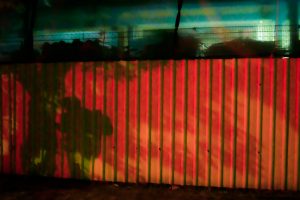Next to me, my grandma shudders. “Eeyer. Not nice. Disgusting.”
“It’s meant to be ugly because it’s a commentary on the excesses of consumerism and the unequal power structure in—” I begin.
“Not nice means not nice.”
I look again at the man’s tiny, worm-like penis, buried amidst his cascading waves of fat. Clearly, through the course of her lifetime, my grandma has seen more pleasing penises than I have, so no rebuttal comes to my mind. And thus judgment was passed on Le Quang Ha’s Gilded Age.
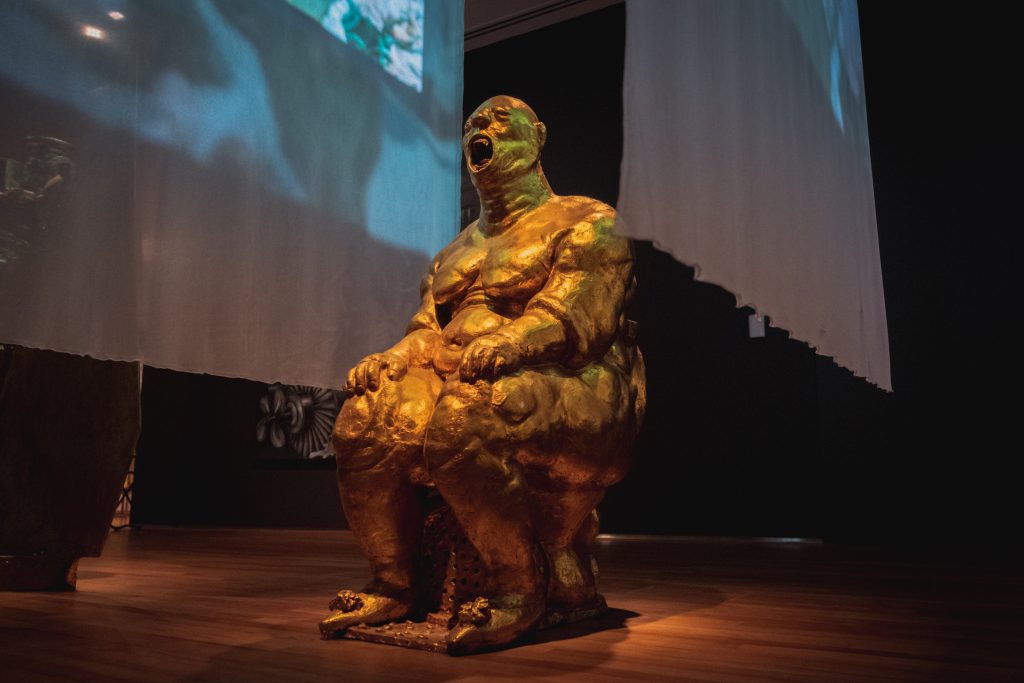
Okay, fine. Faux filial piety aside, I had another motive in asking her to accompany me to the museum: I wanted to put the idea of ‘slow art’ to test.
‘Slow art’, as its name suggests, is a movement encouraging museum visitors to spend more time with art—up to an hour just looking at one artwork—instead of trying to blitz through an entire collection in a single trip, as is often the case with many of us today.
Psychologists Jeffrey and Lisa Smith found that we spend an average of 27.2 seconds viewing a work of art. In the age of 5-second YouTube ads and 15-second TikTok videos, 27.2 seconds may sound like an eternity. But if 30 seconds is hardly enough time for visual acts of intimacy (not speaking from personal experience), then surely that’s too little for looking at art.
Speaking to the BBC, Phil Terry, the founder of Slow Art Day, gushes that spending just 5 minutes absorbing one artwork can be a “transformative experience.”
I don’t quite know what he means by “transformative”—will I suddenly understand why a urinal is considered a seminal work of art? Or will the epiphany be larger, like gaining an insight into the way electoral boundaries are drawn?—so I put Terry’s assertion to the test. And who better to immerse myself in slow art with than my grandma, who, because of her advanced age, already lives life in slow motion?
Another tenet of slow art is to “attend to the artwork itself rather than spend time considering background information, such as the printed notes next to an artwork”. In other words, just looking at the thing itself without trying to situate the work in the historical trajectory of art, its political contexts, and so on. These are things my grandma doesn’t care about. The only thing that matters to her is: is this thing nice?
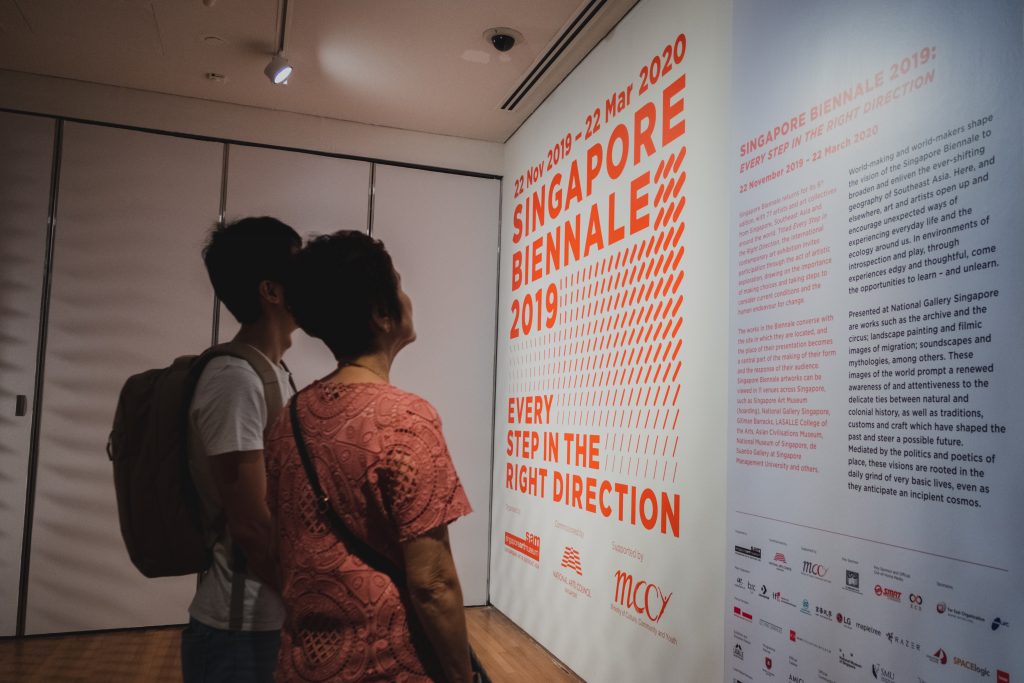
Min Thein Sung’s Time: Dust
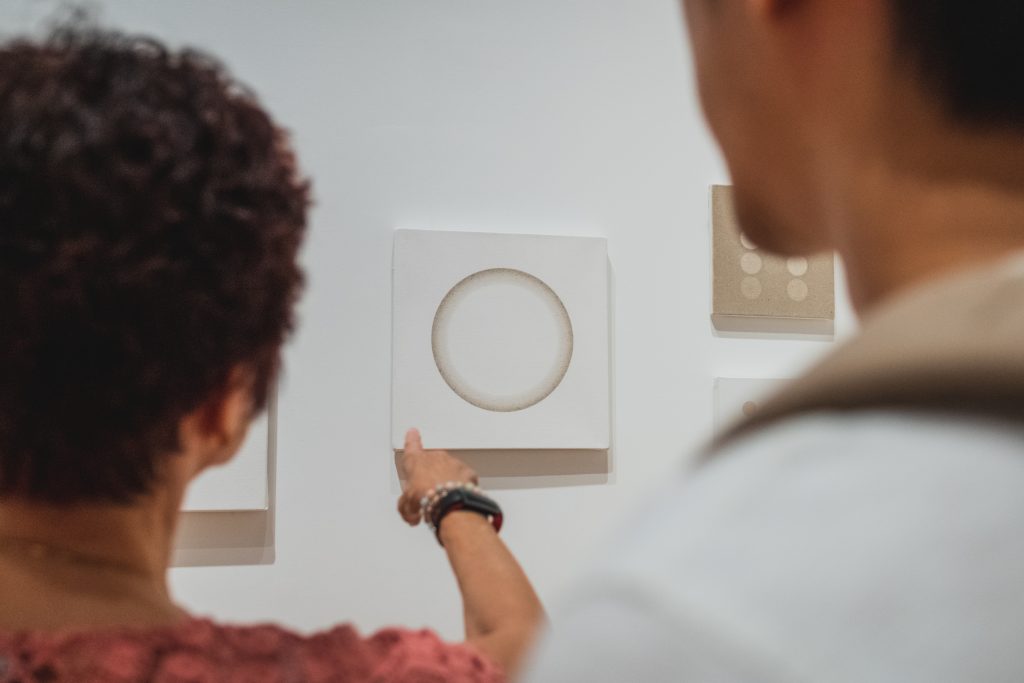
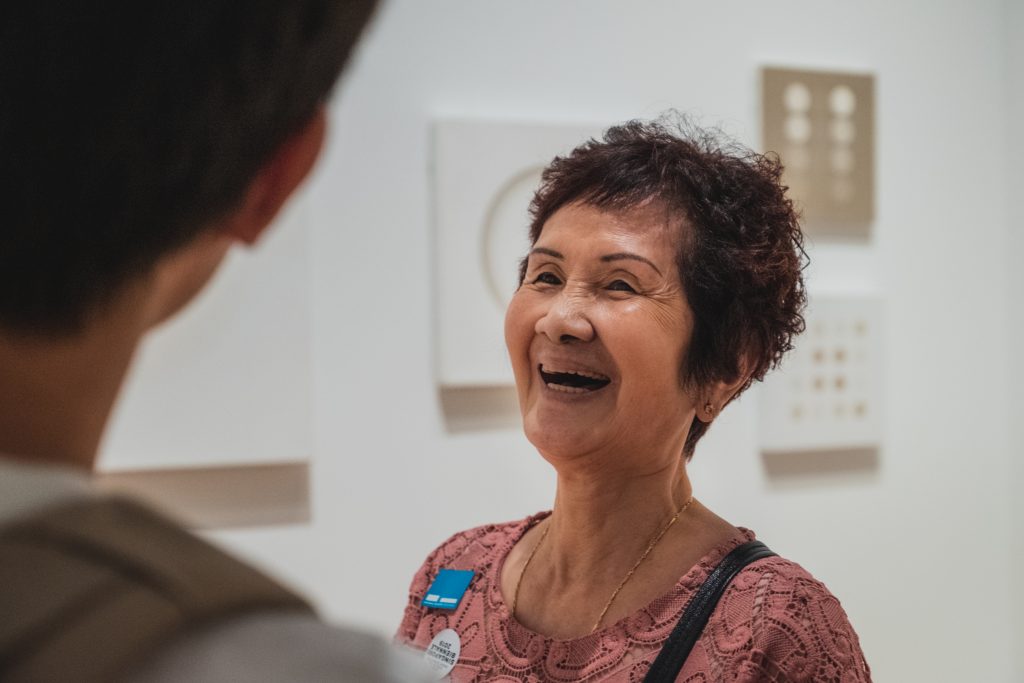
According to my grandma, Min Thein Sung’s ‘paintings’ resemble various objects found in our home, so she feels an immediate kinship with them.
“That one looks like our light hor. Then this one, like our toilet tile,” my grandma chuckles.
We pause for further contemplation, thinking about how the artist has used dust to ‘paint’ on canvas.
“Later when you go home you can use the dust in our house to make art also. So dusty. Because you always don’t want to clean the floor.”
“Or even better. Use Maki’s [our dog] hair.”
“This art makes me feel very creative leh, I like.”

My grandma is enraptured by the video. After the svelte kolek emerges from shapeless wooden planks, I ask my grandma about her newly discovered enthusiasm for nautical engineering, or whether the performance triggered memories of watching kolek races when she was a young girl.
“No la. But the boat reminded me, you know last time your great-grandmother brought me to Singapore from China on a boat. She almost dropped me into the sea.”

With my voyeuristic tendencies, I am immediately drawn to the work. I spend minutes poring over each screen, each a window into the private spaces where composer Ryuichi Sakamoto (of “Merry Christmas Mr Lawrence” fame) lives and works. The glimpses provide an insight into his creative process—how he integrates the ambient noises into his music—but, really, what struck me most was that money can buy beauty and space, even in a claustrophobic city like New York.
After spending about 10 minutes critically examining Sakamoto’s house, my grandma comes to the same conclusion.
“His house very nice, very big. I like his curtains, the whole thing reach the floor that type.”
“But what do you think of this artwork?” I press.
“You think Singapore can find contractor to do house like that?”
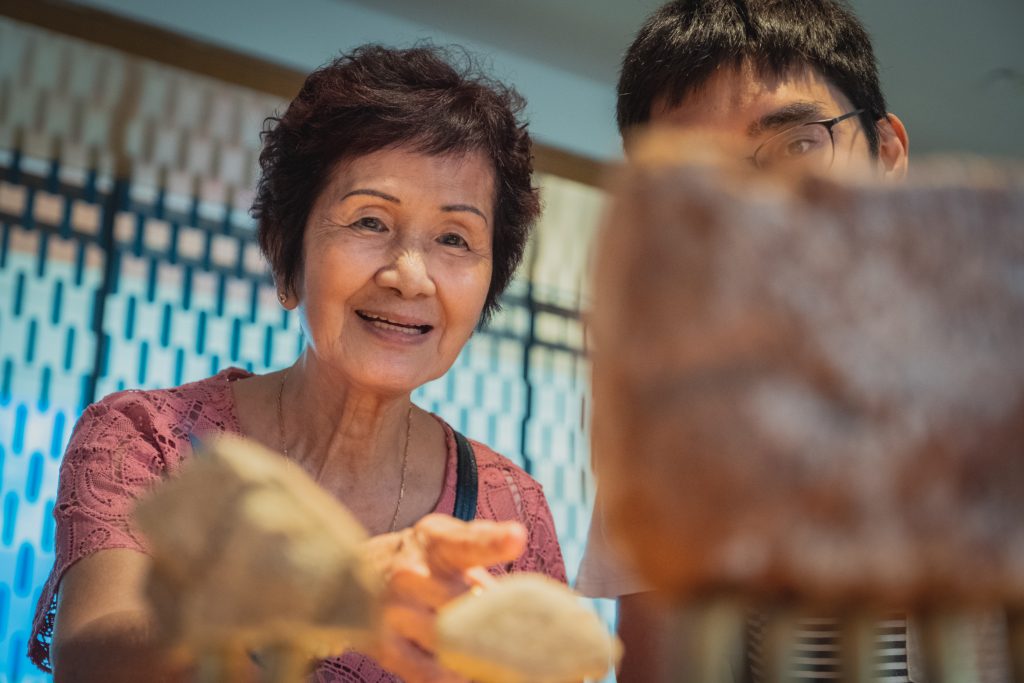
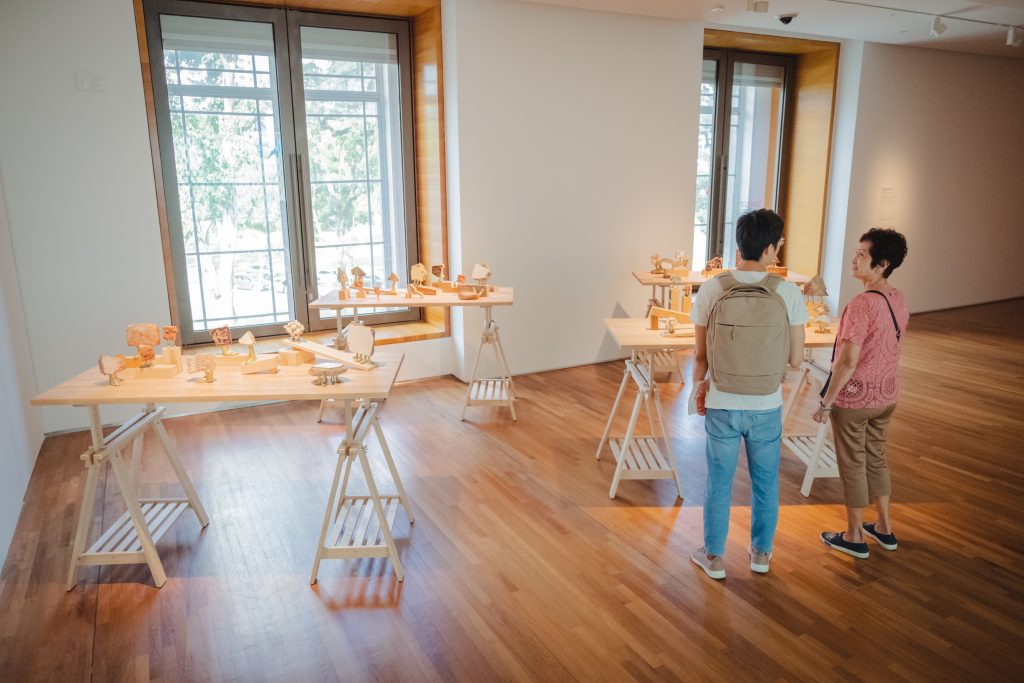
“Like a wall tile dropped and a corner broke off.”
“Then the artist put legs on it and it becomes art!” she cries triumphantly, as if alighting on some transcendental truth. “Their brains very powerful.”
I honestly cannot tell if my grandma meant to compliment or criticise the artwork. Perhaps both. At the same time.
Art.
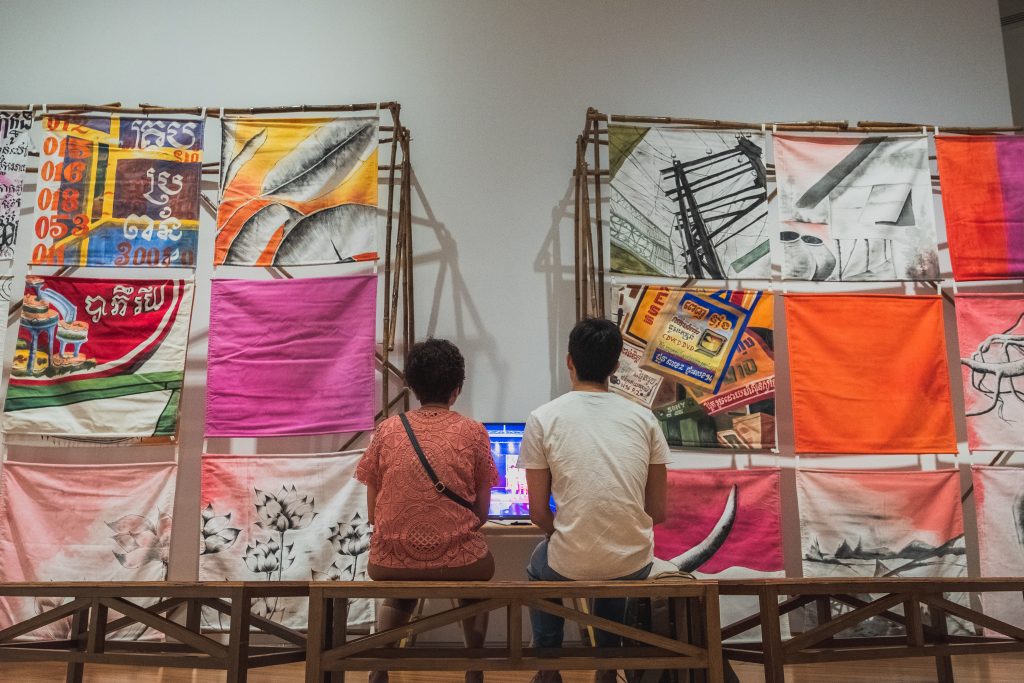

The video sits among the original act’s sprawling patchwork backdrop, but my grandma pays it no attention. It’s put up by a Cambodian non-profit arts school that supports children and youths, but that is of no relevance to my grandma’s enjoyment of the work.
She is, instead, wholly captivated by how the performers juggle flaming sticks, twirl around on a trapeze, do impossible triple backflips, before landing squarely in their teammates’ arms.
As if suddenly aware of time passing, she jolts back to reality and asks me, “Want to go? Don’t know when they perform until.”
I reassure her that we can—and should—stay for as long as she wishes, and she happily lets herself get transported to the circus again.
“Last time China got a lot of these performances,” she mutters to me distractedly, her voice sounding faint in the present, as if it’s coming from a time when she was still a young girl dreaming of the circus.

“Ok la. Now I know what art is. If not I don’t know anything.”
My grandma thinks she has received an education, but it was really me … Here, you expect me to say something profound about how slow art helped deepen my understanding of art. I’m sorry to disappoint. (If it offends you that I remain philistineboy92 even after trying on slow art for size, please ignore this entire concluding section.)
Sure, the longer span of time standing in front of a painting and stroking my hairless chin let me notice details I otherwise wouldn’t. But, for me at least, slow art is not “transformational” (which is frankly just marketing speech or an awesome cartoon series). After the first minute of staring at some ink or dust or blood (Carlos Villa’s Survey of Works), I inevitably begin to zone out, colours start dancing in front of my eyes, and I plot revenge on the various people who have wronged me in my life (e.g. how to poison the colleague who stole my gluten-free bagel last week).
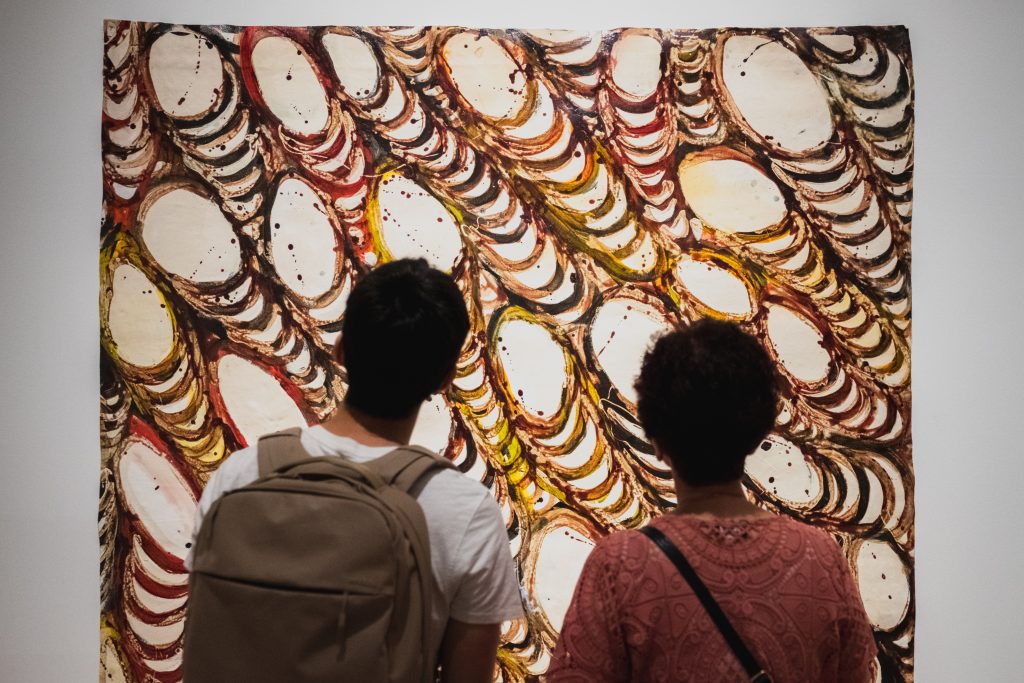
Slow art, in other words, served as a conduit to help me understand this old lady beside me whom I, for years, could not fathom. The prolonged, quiet moments of viewing the artworks fostered intimate conversations between us in the guise of unsolicited art criticism that would make Picasso turn in his grave. This afternoon, I learnt more about my grandma than the artworks themselves: maybe knowing nothing about art and arguing over whether that’s a penis or just a fold of fat can be as valuable—and enjoyable—as discussing the use of colour in Leonardo, Donatello, Michelangelo, or Raphael.
Eager to continue with this heart-warming trip fit for a Channel-8 drama serial, I ask my grandma, “Do you want to look at the other galleries?”
“No. I want to go home and rest. The air-con air is very dry. Keep making me cough.”
What would your grandma or grandpa think of these artworks? Share your stories with us at community@ricemedia.co




